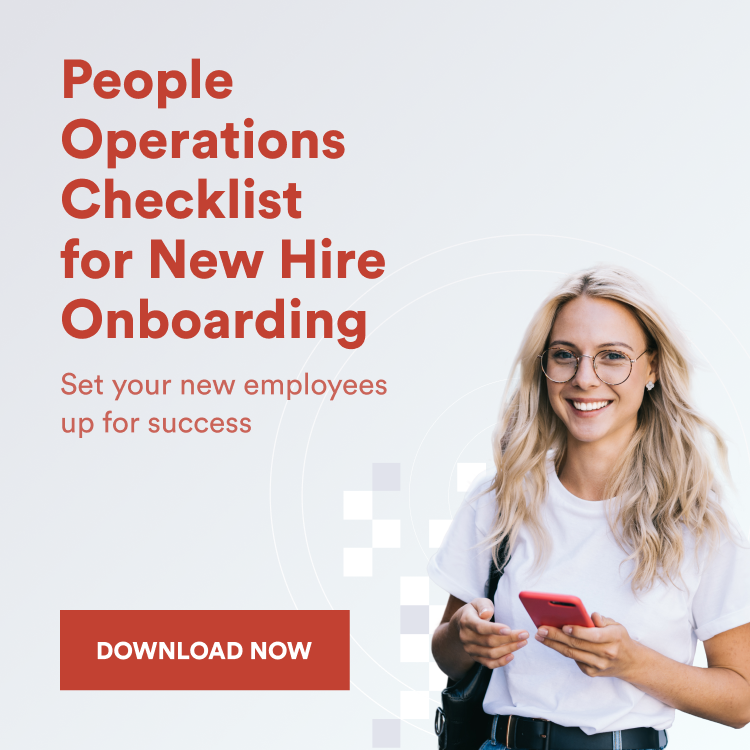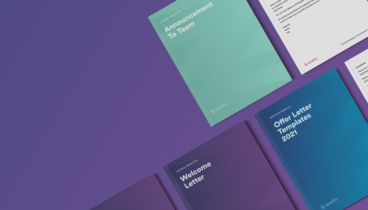Here’s how to create an effective onboarding plan that provides new hires with tools, information, and connections to set them up for success.

Onboarding is integrating a new employee with a company and its culture. It also involves getting a new hire set up with the tools and necessary information to become a productive team member.
Onboarding is not a “one-size-fits-all” approach. Each employee is unique and will respond differently to onboarding with a new company. An effective onboarding program should consider individual learning styles, preferences, cultures, and expectations.
It is essential to recognize that onboarding doesn’t happen overnight — it takes time for employees to fully integrate into their teams and become crucial members of the organization.
1. Communicate with your new hire before their first day
The first step in creating an effective onboarding program is establishing open communication with your new hire before their first day. By reaching out to them ahead of their start date, you’ll make sure that they feel welcome and prepared for their new job.
By reaching out to them ahead of their start date, you’ll make sure that they feel welcome and prepared for their new job.
Here are some things you should include in your communication:
- A warm welcome message from you or someone else at the company makes them feel excited about joining the team.
- Details about what the first day will look like and what they can expect: confirm the start date when they should arrive parking/commuter information, and dress code.
- Contact details for their manager/buddy and more information about the company (if applicable).
- Something fun that might help break the ice on their first day.
- Provide training materials required before starting work.
Download a free sample welcome email template for new employees here.
2. Send a welcome package to promote excitement
One of the best ways to get new hires excited about and invested in their new role is to send them a welcome package. Your company’s welcome package can include anything from branded company swag — like t-shirts or water bottles — to business cards and their employee handbook. The welcome package should contain a few items to help them feel like they’re part of the team.
A logo is the symbol for your business and helps your employees feel connected and empowered by who they represent. When sending a welcome package, display your logo by offering company merchandise to boost loyalty and foster connectedness among your team.
By implementing some of these suggestions, your new hire will begin their tenure at your company feeling welcomed, appreciated, and excited.
3. Get the paperwork out of the way
Get the paperwork out of the way by having new hires complete any necessary paperwork digitally before starting work.
Have a checklist of what paperwork needs to be signed, how to complete it, who to submit it to, and what happens if either the new hire or Human Resources doesn’t receive certain documents.
Zenefits offers a proprietary Hiring & Onboarding software that allows new hires to complete onboarding in under 10 minutes. Talk about efficiency.
Remember that employees will need time to review documents that outline their benefits and compensation before signing and returning them. Make sure you schedule this well in advance of their proposed start date.
4. Be proactive with access and administrative tasks
Before employees hit the desk, you should ensure all new hires have an email address and access to all their systems.
It’s more efficient for a new hire to focus on their training and functional role instead of waiting around for IT or HR managers to set up those things after they’ve started — so it is essential to gather this information beforehand.
Using automated provisioning can speed up the onboarding and offboarding of employees by automatically adjusting or removing access to company resources depending on their role.
5. Document and circulate standard operating procedures
Once you’ve outlined your new hire’s entire onboarding process, it’s time to make sure that everyone on the team is aware of the procedures. Don’t limit just to those who will be interacting with your new employees, either — you want to make sure that anyone who might encounter them can be helpful and supportive.
Let your admin know about the schedule so they can greet or direct your new hire as needed. While face-to-face introductions are ideal, even emailing a photo from an HR database is an excellent way for someone to put a name and face together.
Documentation is also crucial when you want to ensure ownership of ideas and tasks for each person on the team. If there’s no written record of what needs to happen and when, it’s easy for essential steps in the onboarding process to get lost in translation (or worse — skipped altogether).
You might think that this documentation step would require having someone draft up a document itself. Still, many onboarding software solutions offer templates or prewritten instructions that you can use as starting points.
Even if you have someone do some manual work with spreadsheets or word processors, remember: once a Standard Operating Procedure (SOP) is ready and shared with your team, it should save time in the future.
For example, let’s say you’re starting an LLC in Pennsylvania and hope to grow your team to 10 employees by the end of the year. The SOP will save substantial time in the long run and mitigate business risk as your company grows, all while helping with the onboarding of your new team members.
6. Share expectations early and often
Sharing expectations early and often is one of the best ways to mitigate anxiety for new hires.
For example, it can be helpful to share the following with your new joiner:
- Your expectations of them: What you expect from them as a new hire and in specific roles
- The company’s expectations: What the company expects from every employee
- Each other’s expectations: What you expect from their mentors, such as their availability and willingness to help
Expectations should be laid out during onboarding and revisited regularly. When the new hire demonstrates they have mastered a skill or set of tasks, they must understand that more responsibilities will be coming their way.
It can also be helpful to remind them that while they may not feel like an expert yet, you will have complete confidence in them once they do a task correctly a few times. Remind them that this is a natural part of learning any role and that it takes time to learn new things.
7. Create opportunities to connect with coworkers
Include opportunities for your new hires to connect with members of their team and the company as a whole.
Connecting with coworkers is a significant part of onboarding. It can help promote better work and show that you invest in your team’s collective success. When you get to know the people you work with, you’re more likely to feel comfortable in your new role and workplace environment.
Include opportunities for your new hires to connect with members of their team and the company as a whole. On the first day, set up lunch for the new hire with a few different people from around the office. You can either introduce them yourself and then leave them to it, or invite them all to lunch together in a conference room.
Setting up one-on-one meetings for new hires with other team members or their managers can help them smoothly transition into their role and the company.
Remote workers
One of the most important aspects of making a new employee feel welcome at your company is helping them feel comfortable in their work environment. Establishing a sense of comfort can be especially difficult for remote workers, who might worry about feeling disconnected from their colleagues.
One way to remedy this situation is to create opportunities for remote employees to connect and socialize with coworkers. For example, start a monthly video team meeting or an open weekly chat channel where employees can share memes, discuss their weekend plans, or ask questions they want to remain off-the-record.
The importance of connection
Creating these opportunities lets, you show new hires that your company’s culture is warm and inviting. It also gives them a chance to get to know their colleagues and feel more comfortable posing questions or asking for help when needed.
Don’t just stick to people who work in their department. Introduce them to someone from other business areas to give your team members a chance to meet some new people and look at how the rest of the company functions.
The impact of an onboarding plan
In the end, creating an onboarding plan serves multiple purposes. First, it ensures that new hires have the proper tools to succeed.
Second, it offers tacit confirmation that a company cares about its potential success. After all, if you care about engaging your employees and retaining talent, then why not invest in this critical step?
As a business grows, it will likely need to adapt and change its workflow. Part of that may include adding or reworking some of the steps listed here. You’ll want to make sure that any changes you make keep one ultimate goal in mind — efficiently integrating new employees to become happy, productive team members.







